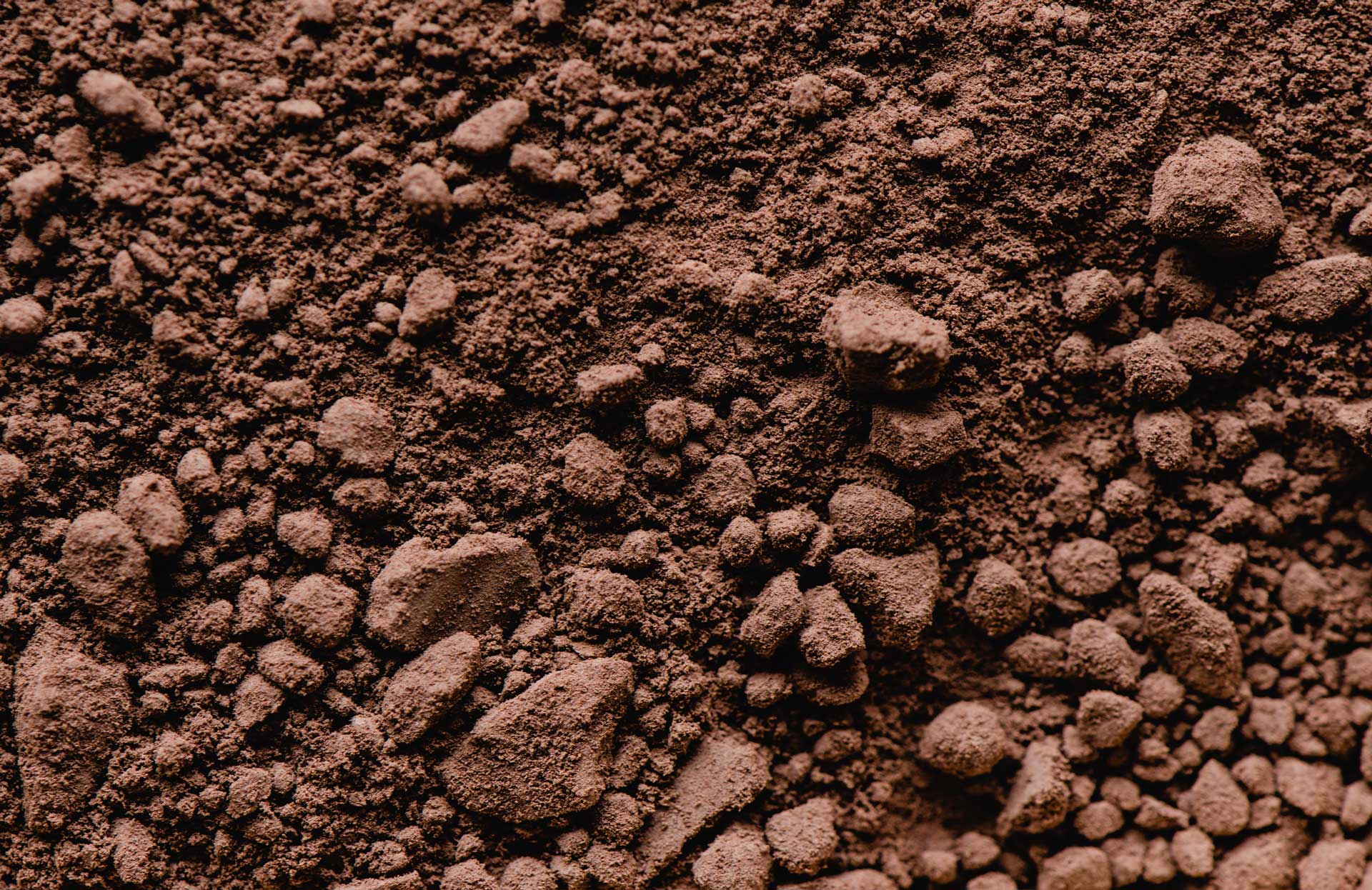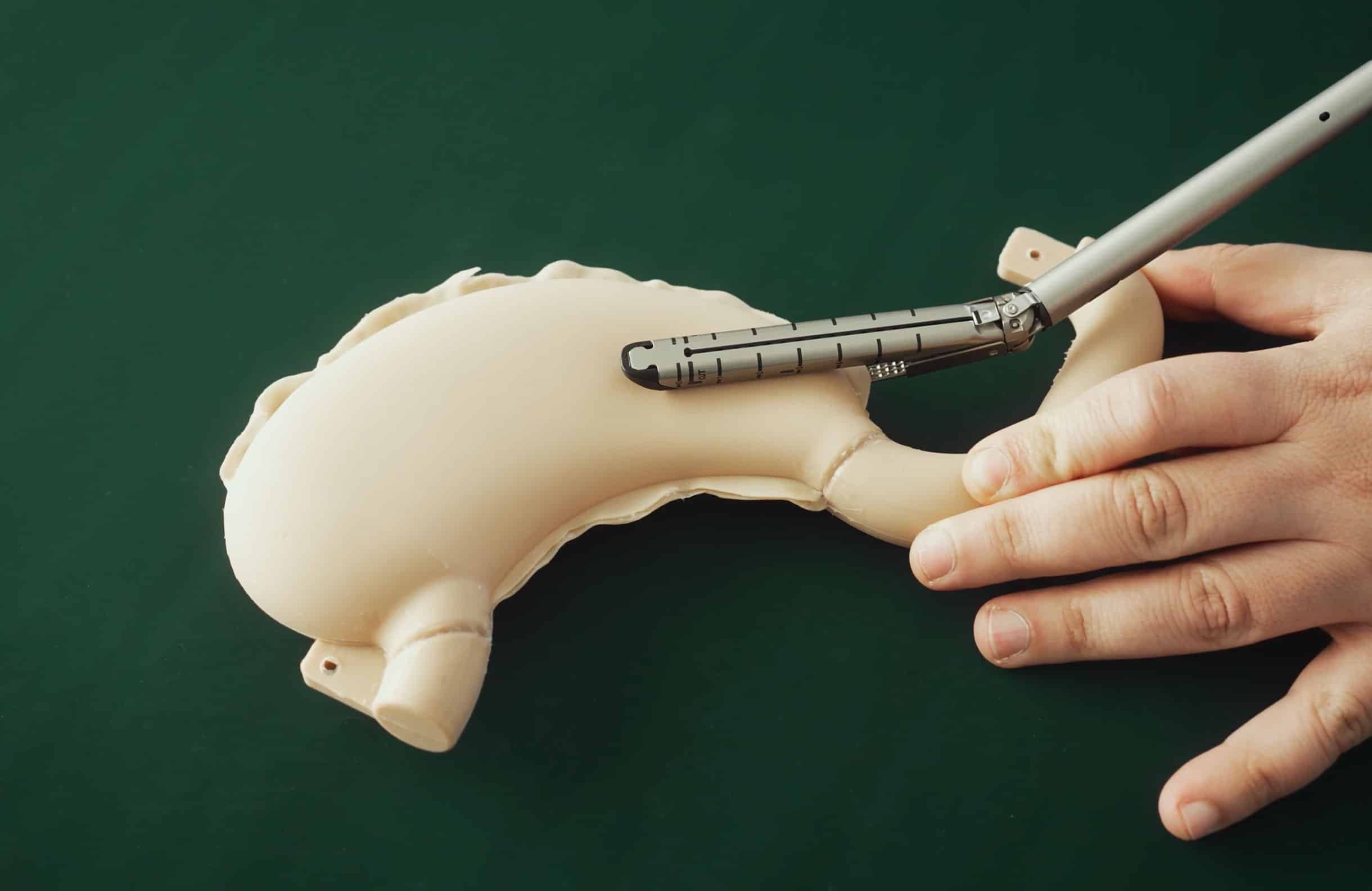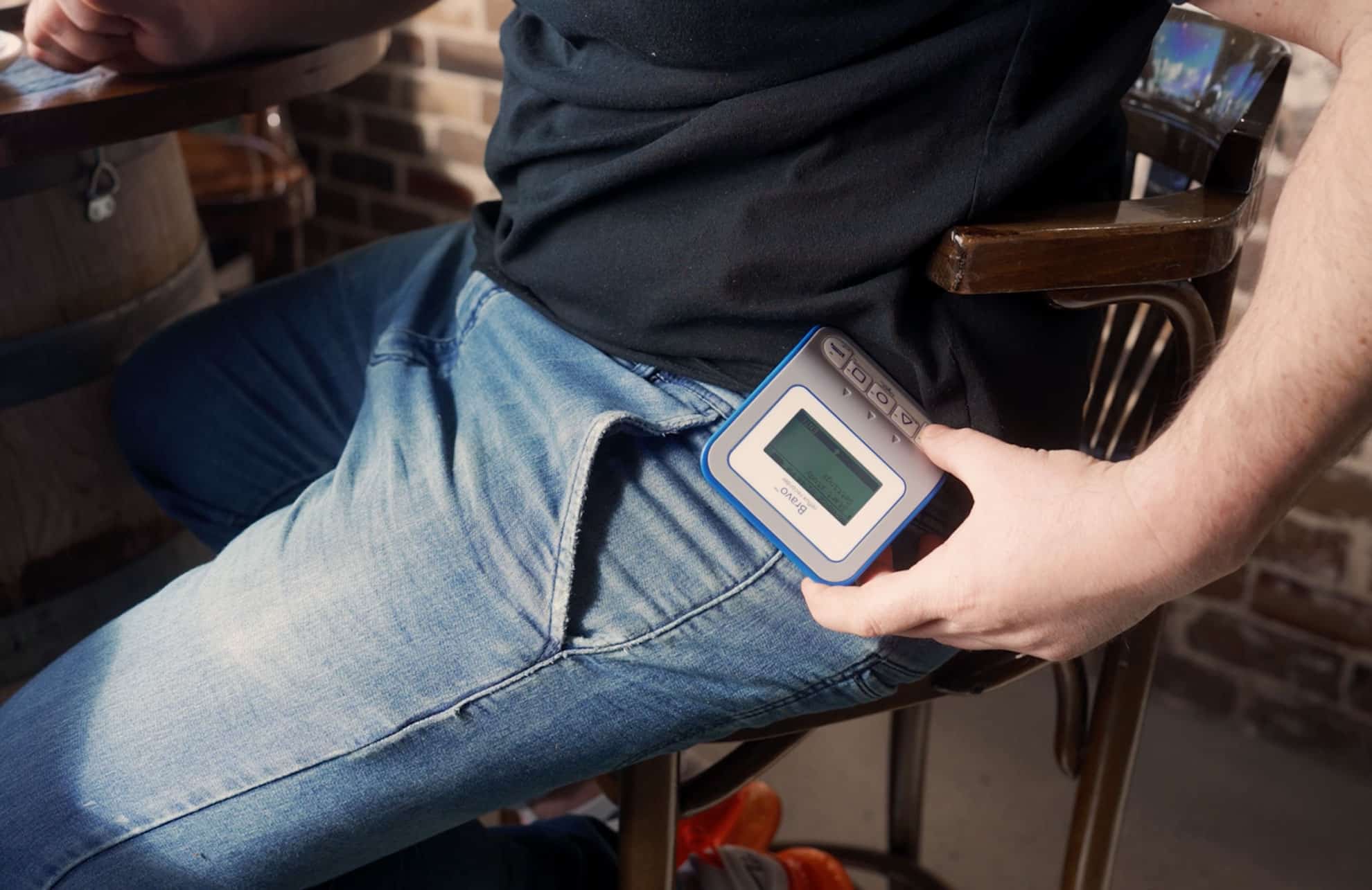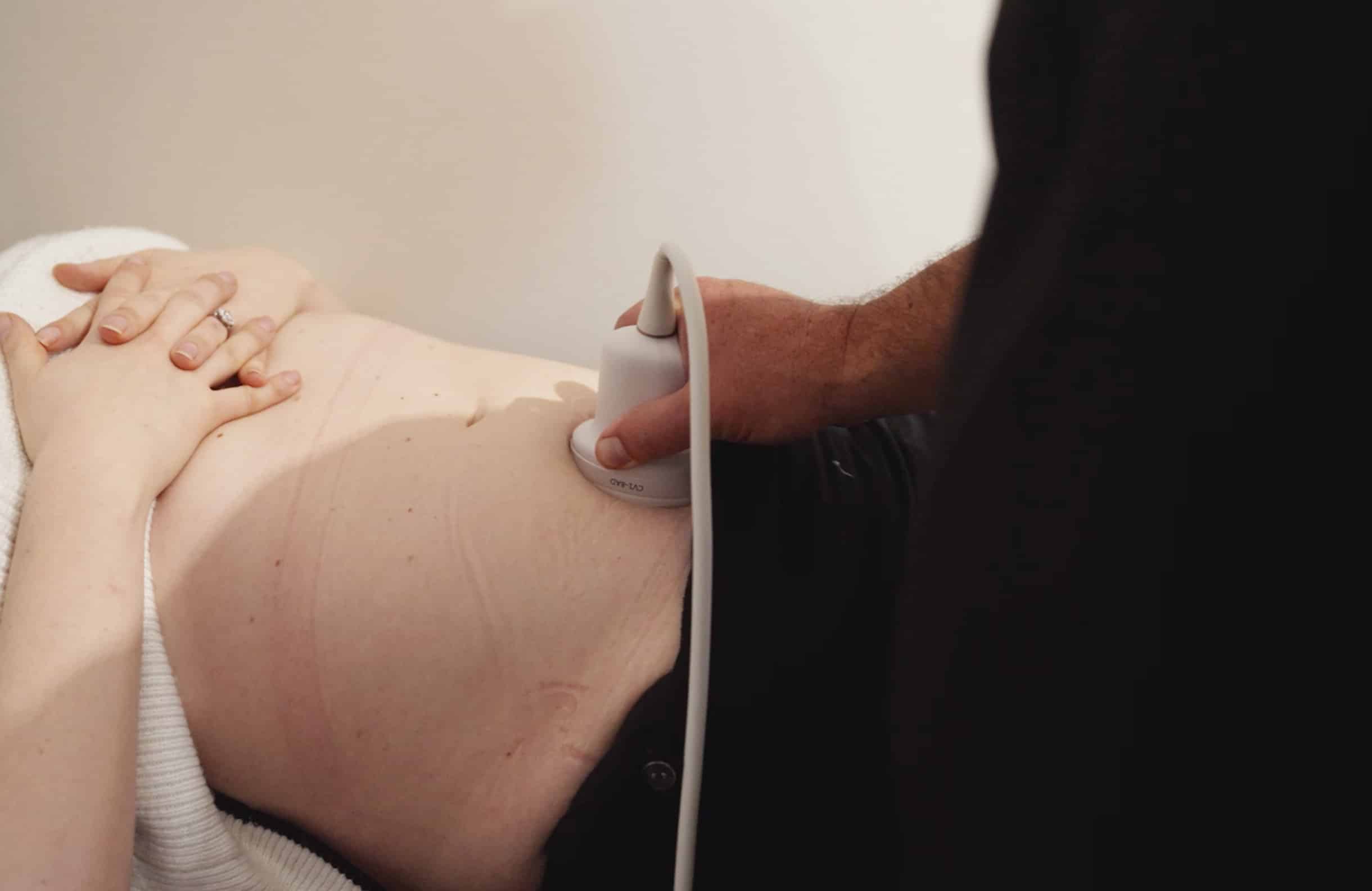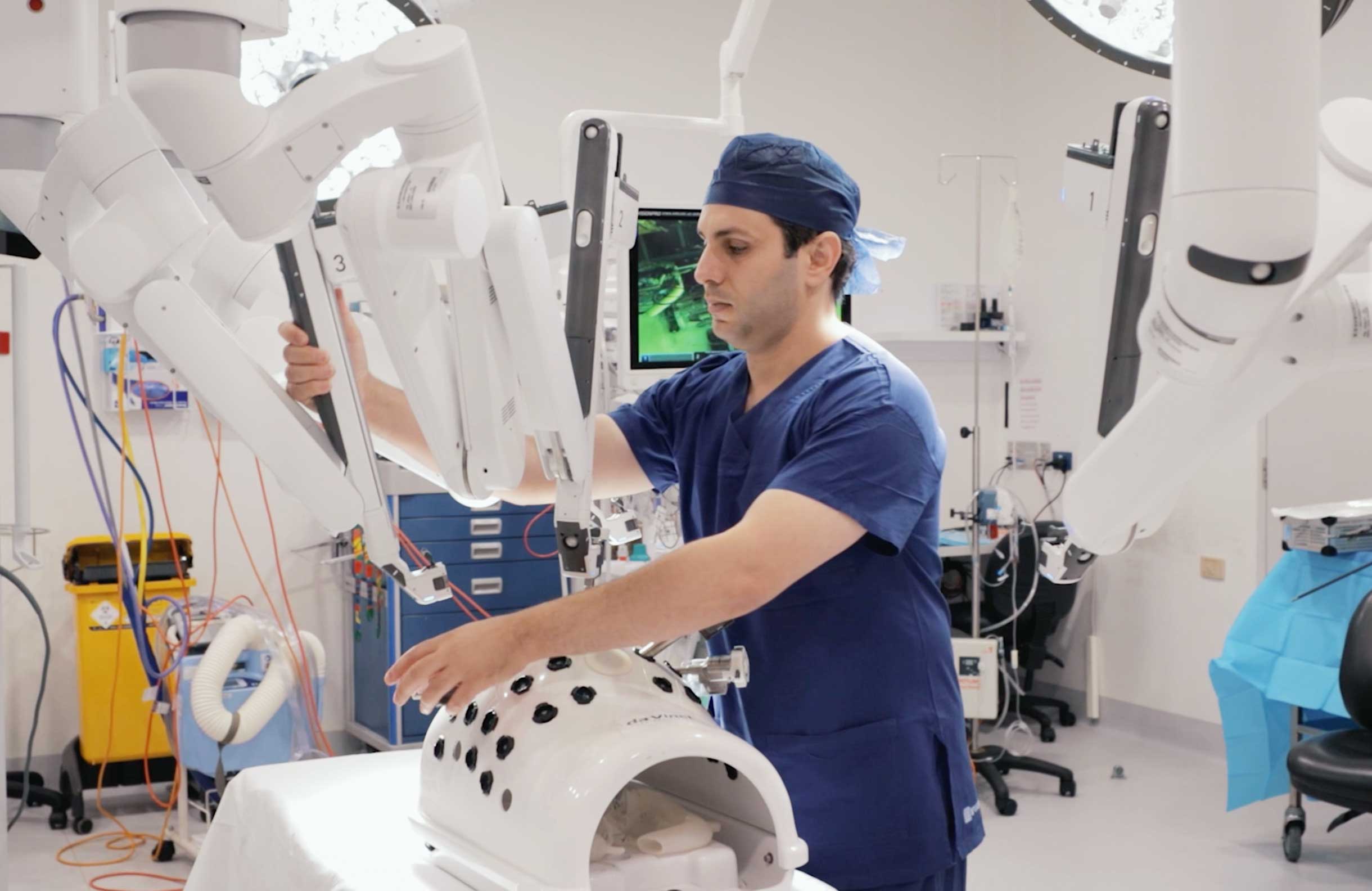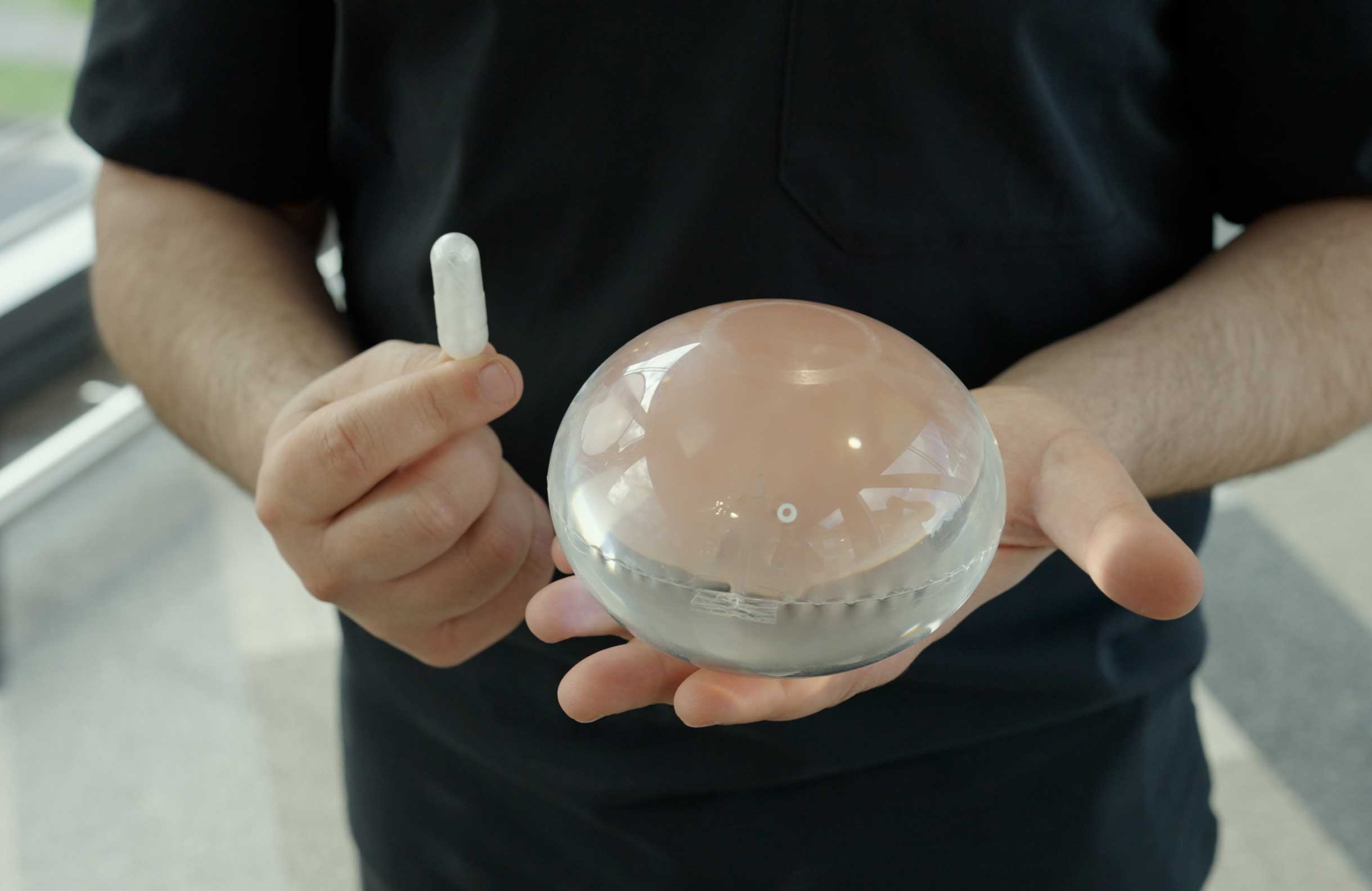Protein: Essential build blocks
Protein: An essential building
block to a Lighter Life
It is a well-known fact that protein is an important part of a healthy balanced diet. It is a source of energy and is required for the growth and repair of your body’s cells. Following weight loss surgery protein becomes even more important than ever before. It is a pivotal factor in maintaining lean body mass (LBM) during the rapid weight loss process and may also help prevent weight regain.
Depending on your choice of weight loss surgery, we will work closely with you to help ensure you are meeting your protein targets. This can at times seem challenging due to your reduced stomach capacity and often reduced appetite. But don’t worry, there are many ways to get your protein in, and below we will discuss some of our top tips to help you on your way.
But first, let’s take a look at the facts and science behind why we need to eat protein, how much we need and where to get it.
Protein
Human proteins are made up of 20 amino acids, aka building blocks. Different combinations of amino acids are required to build different proteins and compounds in the body, such as muscle, bone, hormones, and digestive enzymes. Our body is capable of making 11 of these amino acids, while the other 9 must be provided by the diet and are commonly referred to as “essential amino acids”.
The quality of a protein-containing food is rated according to the amount of essential amino acids it contains. Animal-based proteins are considered ‘complete’ proteins as they contain all 9 essential amino acids. Plant-based proteins are generally incomplete because there is usually at least 1 essential amino acid missing. However, there are exceptions: quinoa, soy and some soy products do contain all nine essential amino acids.
Daily protein requirements
Prior to considering weight loss surgery, your daily protein requirements would have been approximately 46g/day for females and 64g/day for men, aged 19-70 years.
Due to the restrictive nature of weight loss surgery on your stomach size and reduced absorptive surfaces, the minimum protein requirement post-surgery is 60g/day and may increase up to 90-120g of protein per day depending on your choice of procedure. This is something we will workshop with you in detail during your consultations to ensure it is tailored to meet your specific needs.
Ensuring adequate protein intake following weight loss surgery is essential in long-term weight loss success and overall health. It has been shown to reduce weight regain, increase satiety, reduce the loss of lean body mass (e.g. muscle) and reduce metabolic stress.
A lack of protein can result in weight regain, hair loss, oedema, loss of strength and changes in appetite, and will generally be evident in your regular blood tests.
Protein sources
Eating a variety of healthy foods will help you meet your protein requirements, while also ensuring a good mix of vitamins and minerals.
— Animal-based protein foods include lean meats, chicken, turkey, fish (fresh and canned), eggs, and dairy products.
— Plant-based protein foods include legumes (such as chickpeas, black beans, lentils, edamame, baked beans, etc), soy and soy products (such as tempeh, tofu and soy milk), wholegrains (such as quinoa, wholegrain pasta, wild rice and buckwheat), seeds and nuts.
Protein powder supplements can also be a useful way of boosting your protein intake, particularly in the early weeks following your surgery. There is a huge variety available, offering flavoured and tasteless options which are great to add to water, soups and casseroles.
Aim to choose a supplement based on high-quality complete proteins, such as whey and soy which both contain all 9 essential amino acids. Collagen is also a popular choice, containing 8 essential amino acids.
Tips to help you achieve your daily protein requirements:
— Aim to include at least 25-30g protein at each meal.
— Eat 3 meals per day and use protein supplementation for snacks.
— Always eat your protein foods first, then move on to the rest of your meal.
— Eat slowly and take 20-30mins to eat a meal, chew food thoroughly.
— Stop eating when you feel a sense of fullness.
— Keep foods and fluids separate. Wait at least 30mins after a meal to have fluids, this allows greater time for digestion and absorption of proteins and other nutrients.
— Choose high-quality proteins, such as whey, egg white, milk and soy products.
Shannon Lavery
Consultant Dietitian-Nutritionist
Protein: An essential building block to a Lighter Life
It is a well-known fact that protein is an important part of a healthy balanced diet. It is a source of energy and is required for the growth and repair of your body’s cells. Following weight loss surgery protein becomes even more important than ever before. It is a pivotal factor in maintaining lean body mass (LBM) during the rapid weight loss process and may also help prevent weight regain.
Depending on your choice of weight loss surgery, we will work closely with you to help ensure you are meeting your protein targets. This can at times seem challenging due to your reduced stomach capacity and often reduced appetite. But don’t worry, there are many ways to get your protein in, and below we will discuss some of our top tips to help you on your way.
But first, let’s take a look at the facts and science behind why we need to eat protein, how much we need and where to get it.
Protein
Human proteins are made up of 20 amino acids, aka building blocks. Different combinations of amino acids are required to build different proteins and compounds in the body, such as muscle, bone, hormones, and digestive enzymes. Our body is capable of making 11 of these amino acids, while the other 9 must be provided by the diet and are commonly referred to as “essential amino acids”.
The quality of a protein-containing food is rated according to the amount of essential amino acids it contains. Animal-based proteins are considered ‘complete’ proteins as they contain all 9 essential amino acids. Plant-based proteins are generally incomplete because there is usually at least 1 essential amino acid missing. However, there are exceptions: quinoa, soy and some soy products do contain all nine essential amino acids.
Daily protein requirements
Prior to considering weight loss surgery, your daily protein requirements would have been approximately 46g/day for females and 64g/day for men, aged 19-70 years.
Due to the restrictive nature of weight loss surgery on your stomach size and reduced absorptive surfaces, the minimum protein requirement post-surgery is 60g/day and may increase up to 90-120g of protein per day depending on your choice of procedure. This is something we will workshop with you in detail during your consultations to ensure it is tailored to meet your specific needs.
Ensuring adequate protein intake following weight loss surgery is essential in long-term weight loss success and overall health. It has been shown to reduce weight regain, increase satiety, reduce the loss of lean body mass (e.g. muscle) and reduce metabolic stress.
A lack of protein can result in weight regain, hair loss, oedema, loss of strength and changes in appetite, and will generally be evident in your regular blood tests.
Protein sources
Eating a variety of healthy foods will help you meet your protein requirements, while also ensuring a good mix of vitamins and minerals.
— Animal-based protein foods include lean meats, chicken, turkey, fish (fresh and canned), eggs, and dairy products.
— Plant-based protein foods include legumes (such as chickpeas, black beans, lentils, edamame, baked beans, etc), soy and soy products (such as tempeh, tofu and soy milk), wholegrains (such as quinoa, wholegrain pasta, wild rice and buckwheat), seeds and nuts.
Protein powder supplements can also be a useful way of boosting your protein intake, particularly in the early weeks following your surgery. There is a huge variety available, offering flavoured and tasteless options which are great to add to water, soups and casseroles.
Aim to choose a supplement based on high-quality complete proteins, such as whey and soy which both contain all 9 essential amino acids. Collagen is also a popular choice, containing 8 essential amino acids.
Tips to help you achieve your daily protein requirements:
— Aim to include at least 25-30g of protein at each meal.
— Eat 3 meals per day and use protein supplementation for snacks.
— Always eat your protein foods first, then move on to the rest of your meal.
— Eat slowly and take 20-30mins to eat a meal, chew food thoroughly.
— Stop eating when you feel a sense of fullness.
— Keep foods and fluids separate. Wait at least 30mins after a meal to have fluids, this allows greater time for digestion and absorption of proteins and other nutrients.
— Choose high-quality proteins, such as whey, egg white, milk and soy products.
Shannon Lavery
Consultant Dietitian-Nutritionist
Choosing your protein powder
Choosing your protein powder
Protein is an important part of any balanced diet, but even more so following weight loss surgery. We recommend a minimum intake of 60-80g of protein per day, but for some people, your protein requirements may be even higher than this.
Ensuring adequate protein intake will assist with maintaining lean body mass (LBM), increasing satiety, reducing weight regain, and reducing metabolic stress.
Reaching your protein targets can be challenging in the early weeks post-surgery whilst you are recovering. But there is a good range of protein powders that are available to help supplement the foods you eat.
Protein powders can be found as flavoured and unflavoured. Flavoured protein powders are often a great choice to add to water to sip on throughout the day; while unflavoured protein powders can be mixed into soups, casseroles, smoothies, jellies, baked goods, etc, making every bite you take count for a little more protein towards your daily target.
Read on to find out more about the different types of protein powders available and to work which one will be best for you.
Whey protein isolate (WPI)
This would have to be our pick of the bunch. Whey is a complete protein, meaning it contains all 9 essential amino acids. It is a powdered by product of milk and cheese-making, which has been processed and refined to ensure a high protein content (~90%) and a low fat and carbohydrate content. Since it is so low in carbohydrates, it is also low in lactose and often tolerated by people
with a lactose intolerance.
WPI mixes easily into water, milk, smoothies, and yoghurt; when mixing into hot meals such as soups, sauces, and casseroles, aim to add the powder after the meal has cooled a little and just before consumption. WPI is best to be kept below 70ᵒC and therefore not the best choice for baking.
Whey protein concentrates (WPC)
WPC is very similar to a WPI, the key difference is that it is less refined so it will have a slightly lower protein content (~75-80%) and slightly higher fat and carbohydrate content. This does have its benefits, as it will breakdown slower in the body and may help keep you feeling fuller for longer.
Note that due to its slightly higher carbohydrate content, it will be higher in lactose and may not be tolerated by those with a lactose-intolerance.
Collagen protein
Collagen is the most common protein compound found in our bodies. These supplements are generally extracted from Bovine hide (primarily cows). It is a nutritious option containing 8 of the 9 essential amino acids and is a great option for those requiring dairy-free.
Collagen protein supplements tend to be a popular choice because they mix into both hot and cold liquids easily and can also be added to baked goods.
Plant-based protein powders
For those requiring a vegetarian or vegan diet there is also a range of different protein powders available that have been sourced from plant options such as soybean, pea, brown rice, legumes, nuts, and seeds. These will all come in varying concentrations of protein, so be sure to read the label carefully.
Unlike most plant-based proteins, soy protein is also considered a complete protein, containing all 9 essential amino acids, making it an excellent choice.
Plant-based protein powders are suitable to mix into smoothies, soups, hot dishes, and baking recipes.
Shannon Lavery
Consultant Dietitian-Nutritionist
Choosing your protein powder
Protein is an important part of any balanced diet, but even more so following weight loss surgery. We recommend a minimum intake of 60-80g of protein per day, but for some people, your protein requirements may be even higher than this.
Ensuring adequate protein intake will assist with maintaining lean body mass (LBM), increasing satiety, reducing weight regain, and reducing metabolic stress.
Reaching your protein targets can be challenging in the early weeks post-surgery whilst you are recovering. But there is a good range of protein powders that are available to help supplement the foods you eat.
Protein powders can be found as flavoured and unflavoured. Flavoured protein powders are often a great choice to add to water to sip on throughout the day; while unflavoured protein powders can be mixed into soups, casseroles, smoothies, jellies, baked goods, etc, making every bite you take count for a little more protein towards your daily target.
Read on to find out more about the different types of protein powders available and to work which one will be best for you.
Whey protein isolate (WPI)
This would have to be our pick of the bunch. Whey is a complete protein, meaning it contains all 9 essential amino acids. It is a powdered by product of milk and cheese-making, which has been processed and refined to ensure a high protein content (~90%) and a low fat and carbohydrate content. Since it is so low in carbohydrates, it is also low in lactose and often tolerated by people
with a lactose intolerance.
WPI mixes easily into water, milk, smoothies, and yoghurt; when mixing into hot meals such as soups, sauces, and casseroles, aim to add the powder after the meal has cooled a little and just before consumption. WPI is best to be kept below 70ᵒC and therefore not the best choice for baking.
Whey protein concentrates (WPC)
WPC is very similar to a WPI, the key difference is that it is less refined so it will have a slightly lower protein content (~75-80%) and slightly higher fat and carbohydrate content. This does have its benefits, as it will breakdown slower in the body and may help keep you feeling fuller for longer.
Note that due to its slightly higher carbohydrate content, it will be higher in lactose and may not be tolerated by those with a lactose-intolerance.
Collagen protein
Collagen is the most common protein compound found in our bodies. These supplements are generally extracted from Bovine hide (primarily cows). It is a nutritious option containing 8 of the 9 essential amino acids and is a great option for those requiring dairy-free.
Collagen protein supplements tend to be a popular choice because they mix into both hot and cold liquids easily and can also be added to baked goods.
Plant-based protein powders
For those requiring a vegetarian or vegan diet there is also a range of different protein powders available that have been sourced from plant options such as soybean, pea, brown rice, legumes, nuts, and seeds. These will all come in varying concentrations of protein, so be sure to read the label carefully.
Unlike most plant-based proteins, soy protein is also considered a complete protein, containing all 9 essential amino acids, making it an excellent choice.
Plant-based protein powders are suitable to mix into smoothies, soups, hot dishes, and baking recipes.
Below is a list of protein products to look out for.
Protein Product Examples
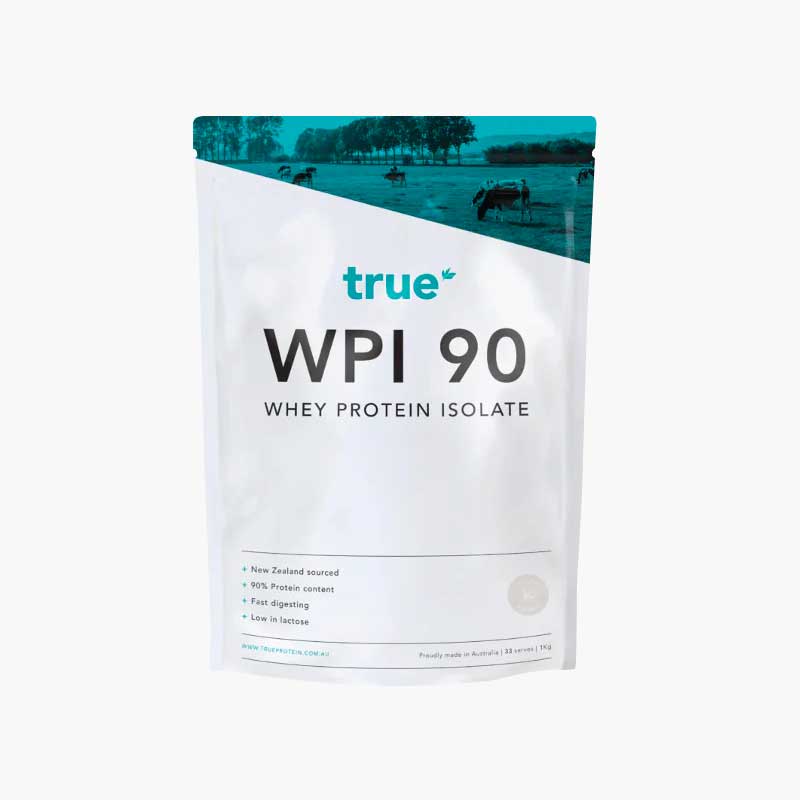
True Protein WPI 90
15g scoop = 13g protein
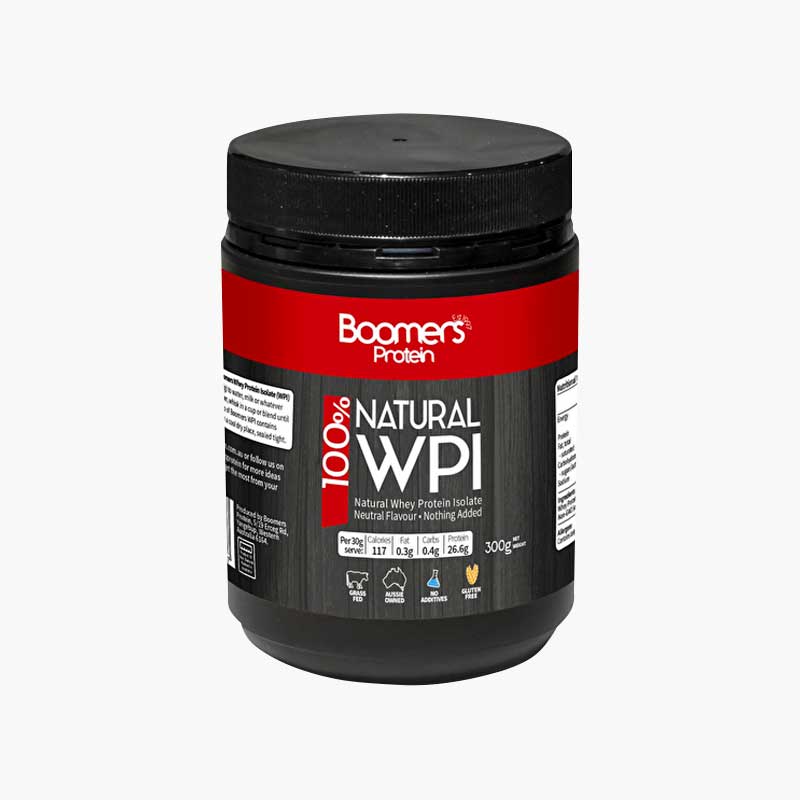
Boomers Protein Natural WPI
15g scoop = 13g protein
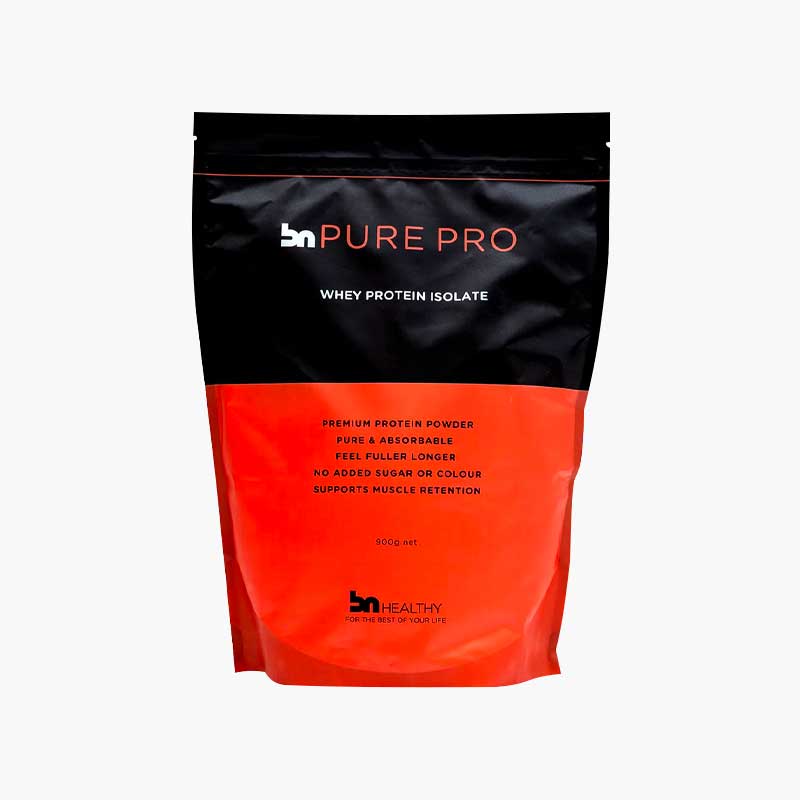
BN Pure Pro WPI
15g scoop = 13.5g protein
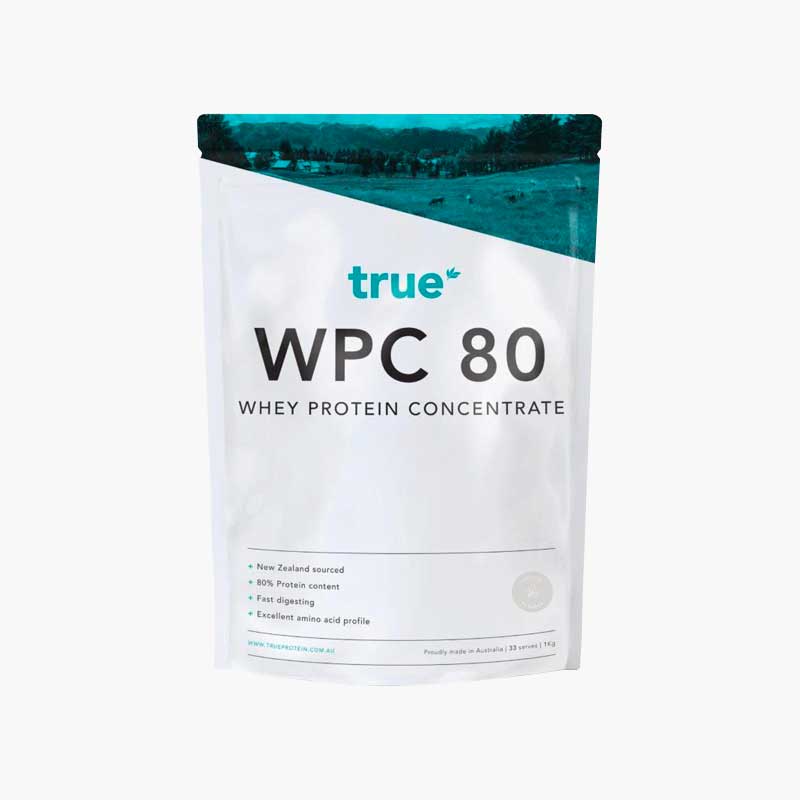
True WPC 80
15g scoop = 11g protein

Boomer Protein Natural WPC
15g scoop = 12g protein
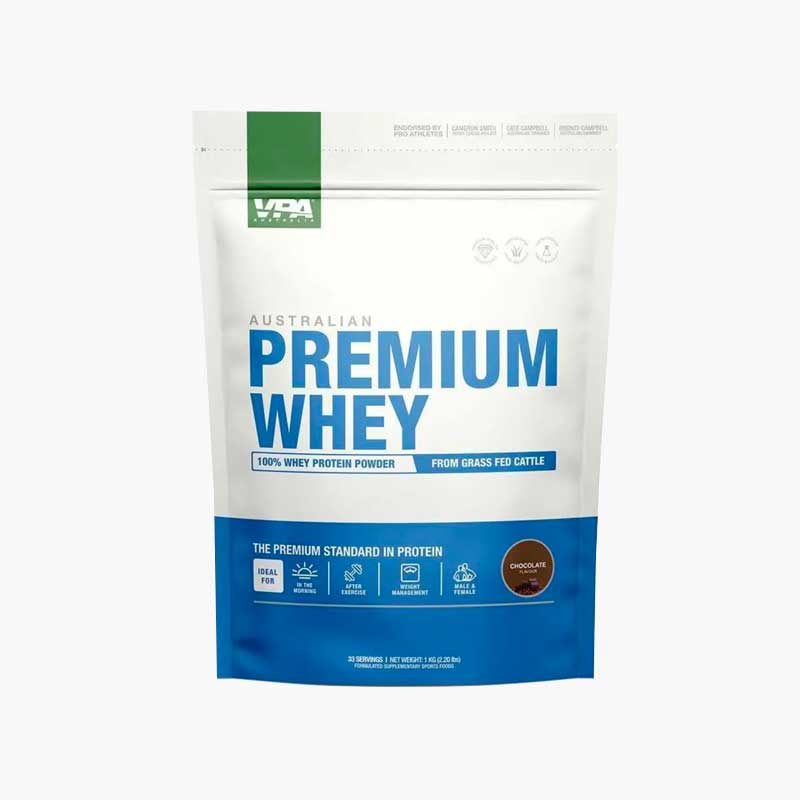
VPA Premium Whey
15g scoop – 12g protein
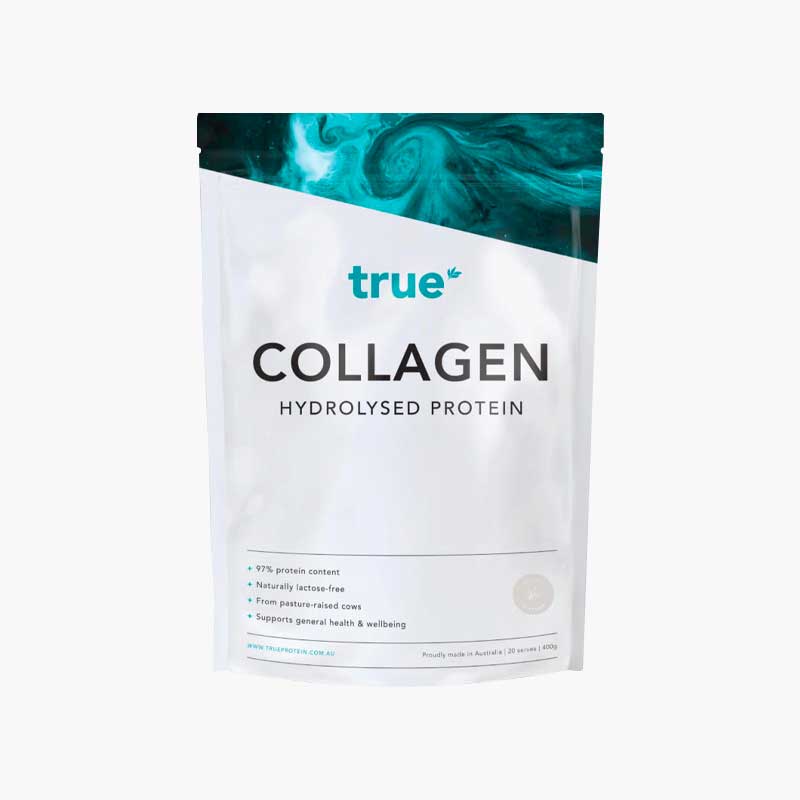
True Protein Collagen
15g scoop = 14.5g protein

Gelpro peptipro
15g scoop = 14.5g protein

FeelGood Tasteless Protein
15g scoop = 14g protein
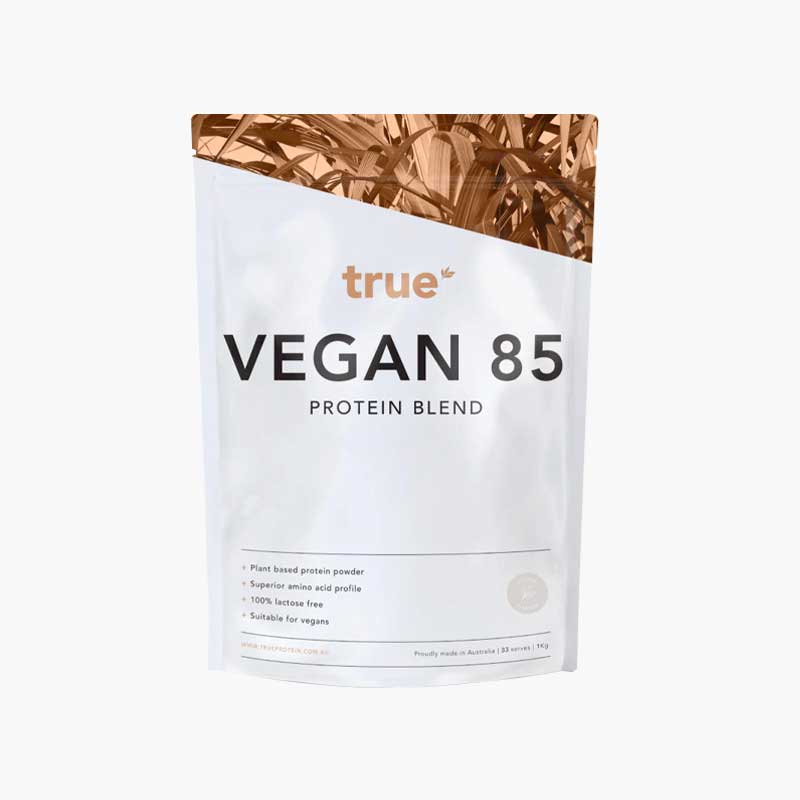
True Protein Vegan 85
15g scoop = 13g protein

Boomers Organic Vegan
15g scoop = 13g protein
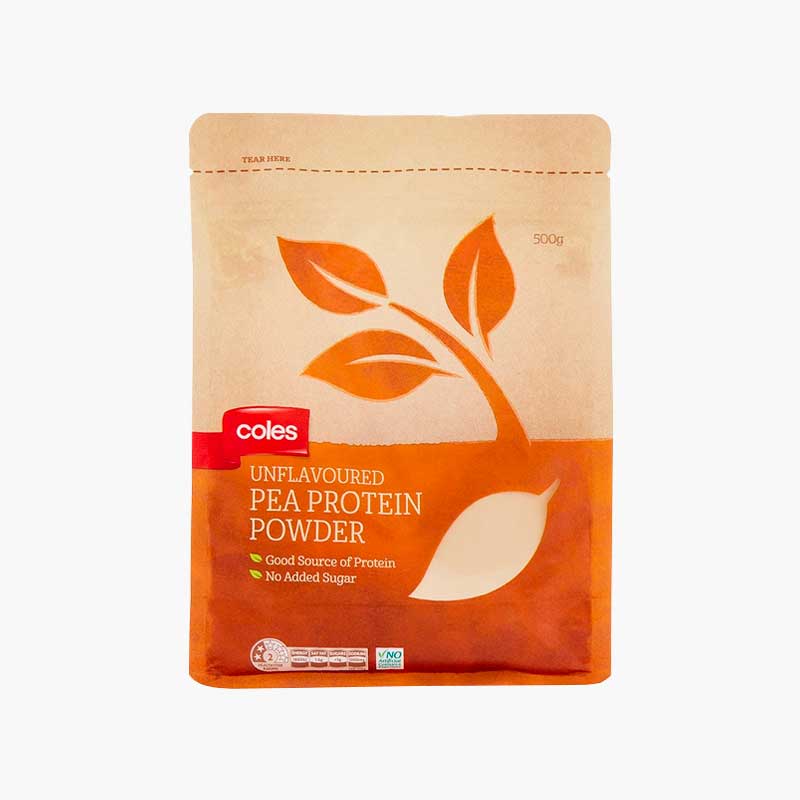
Coles Pea Protein Powder
15g scoop = 12 g protein
WHEY PROTEIN ISOLATE (WPI)

True Protein WPI 90
15g scoop = 13g protein

Boomers Protein Natural WPI
15g scoop = 13g protein

BN Pure Pro WPI
15g scoop = 13.5g protein
WHEY PROTEIN CONCENTRATE (WPC)

True WPC 80
15g scoop = 11g protein

Boomer Protein Natural WPC
15g scoop = 12g protein

VPA Premium Whey
15g scoop – 12g protein
COLLAGEN PROTEIN

True Protein Collagen
15g scoop = 14.5g protein

Gelpro peptipro
15g scoop = 14.5g protein

FeelGood Tasteless Protein
15g scoop = 14g protein
PLANT-BASED PROTEIN

True Protein Vegan 85
15g scoop = 13g protein

Boomers Organic Vegan
15g scoop = 13g protein

Coles Pea Protein Powder
15g scoop = 12 g protein
Shannon Lavery
Consultant Dietitian-Nutritionist
What is a sleeve gastrectomy?
What is a sleeve gastrectomy?
The Laparoscopic sleeve gastrectomy was first performed by Professor Michel Gagner more than 20 years ago. The procedure was initially the first step of a more complex duodenal bypass procedure, however the surgeons soon realised that a sleeve gastrectomy alone is a powerful operation with good short- and long-term results.
The sleeve gastrectomy is now the most performed weight loss procedure worldwide. Its popularity is due to its technical simplicity, short operating time, low complication rate, and excellent short- and long-term results. The procedure is suitable for most patients and does not involve reconfiguration of the small intestine, ensuring continuity of your gastrointestinal tract.
The procedure involves reducing the size of your stomach, resulting in a reduced calorie intake, and changes your hormones in such a way that favours weight loss. The gastric sleeve also can be the first procedure, in a two-stage procedure in patients who have a BMI > 50.
Dr. Mark Magdy
Bariatric & Gastrointestinal Surgeon
What is a sleeve gastrectomy?
The Laparoscopic sleeve gastrectomy was first performed by Professor Michel Gagner more than 20 years ago. The procedure was initially the first step of a more complex duodenal bypass procedure, however the surgeons soon realised that a sleeve gastrectomy alone is a powerful operation with good short- and long-term results.
The sleeve gastrectomy is now the most performed weight loss procedure worldwide. Its popularity is due to its technical simplicity, short operating time, low complication rate, and excellent short- and long-term results. The procedure is suitable for most patients and does not involve reconfiguration of the small intestine, ensuring continuity of your gastrointestinal tract.
The procedure involves reducing the size of your stomach, resulting in a reduced calorie intake, and changes your hormones in such a way that favours weight loss. The gastric sleeve also can be the first procedure, in a two-stage procedure in patients who have a BMI > 50.
Dr. Mark Magdy
Bariatric & Gastrointestinal Surgeon
Treating acid reflux
Treating acid reflux
Reflux, regurgitation, and heartburn are all common symptoms in both the general population and in patients who have previously undergone weight loss procedures. These symptoms can be painful and result in significant discomfort. For patients who experience reflux symptoms, it is important to complete the right investigations, such that treatment can be tailored to the underlying cause.
For patients who experience reflux symptoms, the investigations usually include a gastroscopy, pH studies, radiology studies, and Oesophageal studies. Not all investigations are required for every patient, however, each test looks for different causes of reflux or alternatively may help in the planning of your treatment. A gastroscopy looks inside your stomach, looking for evidence of reflux disease and if present, how severe the disease is. Barium swallows, Oesophageal studies, and pH studies may help confirm and plan the appropriate treatment.
There are several treatment options available for patients suffering from reflux disease, these include both surgical and non-surgical options. Like other areas of medicine, new and emerging technology has allowed for many of these tests to be less intrusive and more comfortable to complete.
Dr. Mark Magdy
Bariatric & Gastrointestinal Surgeon
Treating acid reflux
Reflux, regurgitation, and heartburn are all common symptoms in both the general population and in patients who have previously undergone weight loss procedures. These symptoms can be painful and result in significant discomfort. For patients who experience reflux symptoms, it is important to complete the right investigations, such that treatment can be tailored to the underlying cause.
For patients who experience reflux symptoms, the investigations usually include a gastroscopy, pH studies, radiology studies, and Oesophageal studies. Not all investigations are required for every patient, however, each test looks for different causes of reflux or alternatively may help in the planning of your treatment. A gastroscopy looks inside your stomach, looking for evidence of reflux disease and if present, how severe the disease is. Barium swallows, Oesophageal studies, and pH studies may help confirm and plan the appropriate treatment.
There are several treatment options available for patients suffering from reflux disease, these include both surgical and non-surgical options. Like other areas of medicine, new and emerging technology has allowed for many of these tests to be less intrusive and more comfortable to complete.
Dr. Mark Magdy
Bariatric & Gastrointestinal Surgeon
Losing weight before pregnancy
Losing weight before pregnancy
Bariatric surgery can improve a patient’s fertility and some of the pregnancy-related outcomes. It is important to note, however, that following metabolic surgery, patients should wait at least 12-18 months before becoming pregnant. This should allow a patient to stabilise their weight, ensuring they consume enough calories for both the mother and fetus. This means, after a bariatric procedure, contraception should be prescribed. This can be in the form of barrier protection, oral contraceptives, or intra-uterine devices.
It is also important that women are closely monitored during their pregnancies, looking for and correcting any nutritional deficiency, that should arise. The care of a pregnant woman post metabolic surgery should involve a multidisciplinary team including the patients’ general practitioner, obstetrician, dietician, and surgeon.
Metabolic surgery can result in a significant improvement in outcomes for both the mother and fetus.
Dr. Mark Magdy
Bariatric & Gastrointestinal Surgeon
Dr. Andrew Zuschmann
Obstetrician & Gynaecologist
Losing weight before pregnancy
Bariatric surgery can improve a patient’s fertility and some of the pregnancy-related outcomes. It is important to note, however, that following metabolic surgery, patients should wait at least 12-18 months before becoming pregnant. This should allow a patient to stabilise their weight, ensuring they consume enough calories for both the mother and fetus. This means, after a bariatric procedure, contraception should be prescribed. This can be in the form of barrier protection, oral contraceptives, or intra-uterine devices.
It is also important that women are closely monitored during their pregnancies, looking for and correcting any nutritional deficiency, that should arise. The care of a pregnant woman post metabolic surgery should involve a multidisciplinary team including the patients’ general practitioner, obstetrician, dietician, and surgeon.
Metabolic surgery can result in a significant improvement in outcomes for both the mother and fetus.
Dr. Mark Magdy
Bariatric & Gastrointestinal Surgeon
Dr. Andrew Zuschmann
Obstetrician & Gynaecologist
Your surgical journey
Your surgical journey
For many patients, the thought of surgery may be daunting. Knowing what to expect and being familiar with that environment, may help alleviate some of the anxiety on the big day of surgery. This video is a brief explanation of the different areas of the hospital and takes you on a tour, from the initial consultation right through to your hospital room.
The journey begins before your initial face-to-face consultation, as we will ask you to undergo blood tests and fill out a questionnaire about your general health. At the initial face-to-face consultation, we discuss in detail the varying options available and what your expectations are. We work together, to tailor the treatment to your lifestyle and expectations.
For people undergoing a procedure, all procedures are performed in a hospital. On the day of your procedure, it’s necessary to check in, like a hotel, your details are confirmed, and we ensure the right procedure is being performed for the right patient. From there, you will dress in a hospital gown as you are prepared for surgery.
The operating room will be filled with staff who are all involved in your care. The staff works together to ensure your procedure is performed safely. Once completed, you will be moved to the recovery area where nursing staff will ensure your pain and nausea are attended too. Once deemed safe, you will be sent to your allocated hospital room.
On the hospital ward, the staff are trained to look after patients who have undergone surgery. They will ensure your heart rate, temperature, and blood pressure are checked regularly and will frequently monitor your progress to ensure a smooth and speedy recovery.
Dr. Mark Magdy
Bariatric & Gastrointestinal Surgeon
Your surgical journey
For many patients, the thought of surgery may be daunting. Knowing what to expect and being familiar with that environment, may help alleviate some of the anxiety on the big day of surgery. This video is a brief explanation of the different areas of the hospital and takes you on a tour, from the initial consultation right through to your hospital room.
The journey begins before your initial face-to-face consultation, as we will ask you to undergo blood tests and fill out a questionnaire about your general health. At the initial face-to-face consultation, we discuss in detail the varying options available and what your expectations are. We work together, to tailor the treatment to your lifestyle and expectations.
For people undergoing a procedure, all procedures are performed in a hospital. On the day of your procedure, it’s necessary to check in, like a hotel, your details are confirmed, and we ensure the right procedure is being performed for the right patient. From there, you will dress in a hospital gown as you are prepared for surgery.
The operating room will be filled with staff who are all involved in your care. The staff works together to ensure your procedure is performed safely. Once completed, you will be moved to the recovery area where nursing staff will ensure your pain and nausea are attended too. Once deemed safe, you will be sent to your allocated hospital room.
On the hospital ward, the staff are trained to look after patients who have undergone surgery. They will ensure your heart rate, temperature, and blood pressure are checked regularly and will frequently monitor your progress to ensure a smooth and speedy recovery.
Dr. Mark Magdy
Bariatric & Gastrointestinal Surgeon
Robotic surgery
Robotic Surgery
Robotic surgery has grown exponentially over the past decade. The robotic technology is controlled by a surgeon at a console and allows surgeons to operate with an increased range of motion. The robotic camera also allows surgeons to see in 3D as opposed to 2D, allowing for greater depth perception. As with all fields, the robotic platforms are improving in their functionality and are ultimately built with both the patient and surgeon in mind, to ensure procedures are completed as safely as possible.
Multiple medical companies have produced robotic platforms and we can expect over the next decade that more and more robotic platforms will be available with improved functionality. Almost all procedures can be performed with robotic technology. In bariatric surgery, the increased abdominal fat and thicker abdominal wall means increased torque and pressure on ports and laparoscopic instruments, something that can be overcome with robotic technology.
Multiple studies have shown improved recovery for patients when their procedure is performed robotically. This is an incredibly exciting time for surgeons as we see the rapid advancements in technology and how these advancements can be directed to patient care.
Dr. Mark Magdy
Bariatric & Gastrointestinal Surgeon
Robotic Surgery
Robotic surgery has grown exponentially over the past decade. The robotic technology is controlled by a surgeon at a console and allows surgeons to operate with an increased range of motion. The robotic camera also allows surgeons to see in 3D as opposed to 2D, allowing for greater depth perception. As with all fields, the robotic platforms are improving in their functionality and are ultimately built with both the patient and surgeon in mind, to ensure procedures are completed as safely as possible.
Multiple medical companies have produced robotic platforms and we can expect over the next decade that more and more robotic platforms will be available with improved functionality. Almost all procedures can be performed with robotic technology. In bariatric surgery, the increased abdominal fat and thicker abdominal wall means increased torque and pressure on ports and laparoscopic instruments, something that can be overcome with robotic technology.
Multiple studies have shown improved recovery for patients when their procedure is performed robotically. This is an incredibly exciting time for surgeons as we see the rapid advancements in technology and how these advancements can be directed to patient care.
Dr. Mark Magdy
Bariatric & Gastrointestinal Surgeon
Which balloon is right for me?
Which balloon is right for me?
Intra-gastric balloons are another tool used to help patients lose weight and improve their metabolic health. There are a number of balloons available, and they vary in the duration of the balloon i.e. 4, 6, or 12 months, and how they are placed, either with the aid of a gastroscopy or alternatively under x-ray guidance.
The intragastric gastric has been shown to delay gastric emptying and induce a sense of satiety. This ultimately results in reduced calorie intake. The intragastric balloons have also been used in combination with medication, helping maximise results,
As with any metabolic intervention, we use the intra-gastric balloon as a tool to improve a patient’s relationship with food. Intense programs with both nutritional and psychologist support complement the balloon and ensure the best outcomes are achieved.
Dr. Mark Magdy
Bariatric & Gastrointestinal Surgeon
Which balloon is right for me?
Intra-gastric balloons are another tool used to help patients lose weight and improve their metabolic health. There are a number of balloons available, and they vary in the duration of the balloon i.e. 4, 6, or 12 months, and how they are placed, either with the aid of a gastroscopy or alternatively under x-ray guidance.
The intragastric gastric has been shown to delay gastric emptying and induce a sense of satiety. This ultimately results in reduced calorie intake. The intragastric balloons have also been used in combination with medication, helping maximise results,
As with any metabolic intervention, we use the intra-gastric balloon as a tool to improve a patient’s relationship with food. Intense programs with both nutritional and psychologist support complement the balloon and ensure the best outcomes are achieved.
Dr. Mark Magdy
Bariatric & Gastrointestinal Surgeon

